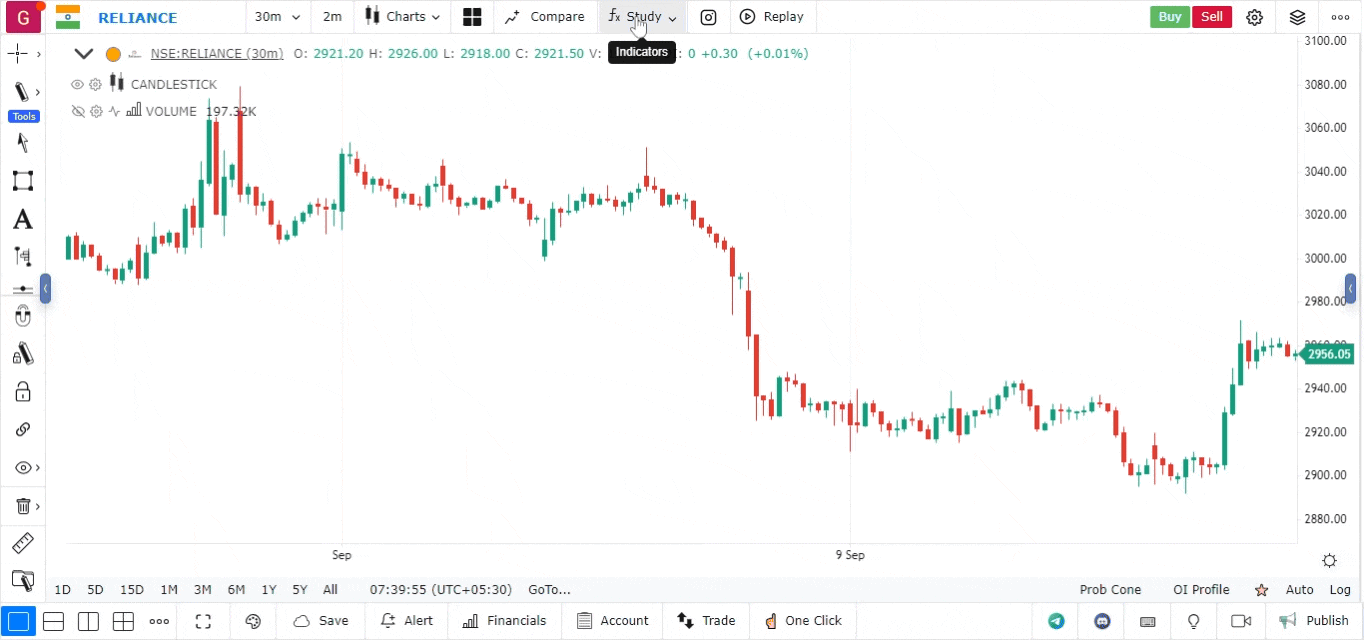Double Exponential Moving Average (DEMA)
The Double Exponential Moving Average (DEMA) is a technical analysis indicator that aims to reduce the lag associated with traditional moving averages, providing a more responsive signal to price changes. You can easily apply the DEMA to your charts. Below is a detailed overview of the DEMA and its implementation.
What is Double Exponential Moving Average (DEMA)?
The DEMA is calculated using two exponential moving averages (EMAs) and is designed to give traders a smoother, more accurate moving average that reacts more quickly to price changes than a standard moving average. It can be used to identify trends and potential buy
DEMA Formula
The formula for calculating the DEMA is as follows:
Where:
- = Exponential Moving Average of the closing price over periods.
- = Exponential Moving Average of the previously calculated EMA.
How to Add DEMA
-
Open the Platform:
- Go to the platform and select the asset you want to analyze.
-
Add DEMA Indicator:
- Click on the Indicators menu in the top toolbar.
- Search for “Double Exponential Moving Average” in the search bar.
- Click on the DEMA indicator to add it to your chart.

- Configure Settings:
- You can customize the settings based on your trading strategy. Common settings include:
- Period: The number of periods to use for the DEMA calculation (e.g., 14, 21, etc.).
- Color and Line Style: Customize the appearance of the DEMA line for better visibility on your chart.
- You can customize the settings based on your trading strategy. Common settings include:
How to Interpret DEMA
-
Trend Identification:
- When the DEMA line is rising, it indicates an uptrend, while a falling DEMA suggests a downtrend.
- The steepness of the DEMA can also indicate the strength of the trend.
-
Buy and Sell Signals:
- Buy Signal: When the price crosses above the DEMA, it may signal a buying opportunity.
- Sell Signal: When the price crosses below the DEMA, it may indicate a selling opportunity.
-
Crossover Strategies:
- You can use DEMA in conjunction with other moving averages (like SMA or EMA) to identify potential crossover signals, providing additional confirmation for entry and exit points.